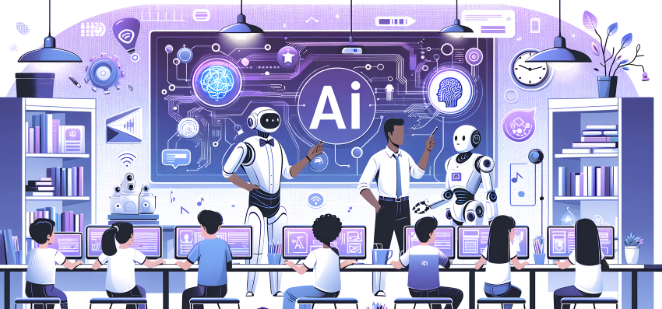The integration of Artificial Intelligence (AI) into education has evolved gradually over the decades. From basic computer-assisted instruction to modern adaptive learning systems, AI’s journey in the education sector reflects significant milestones driven by technological progress.
1. Early Beginnings – 1960s to 1980s
The concept of intelligent tutoring systems (ITS) first emerged in the 1960s and 70s.
These early systems aimed to simulate the behavior of a human tutor using rule-based logic.
One of the earliest examples was SCHOLAR, developed in 1970, which used natural language to tutor students in geography.
Though limited in capacity, these systems laid the foundation for future AI-based learning technologies.
2. Expansion and Research – 1990s
During the 1990s, advances in computing power led to more sophisticated educational software.
AI research focused on improving learning algorithms, cognitive modeling, and interaction with students.
Projects like ANDES and CIRCSIM used AI to teach physics and medicine, respectively.
These tools included features like error analysis, real-time feedback, and adaptive content delivery.
3. The Rise of Machine Learning – 2000s
With the rise of machine learning, AI systems became more data-driven and capable of learning from user behavior.
This decade saw the emergence of tools like Knewton, which used adaptive learning technology to customize lesson paths based on student performance.
The focus shifted to large-scale implementation and improving the effectiveness of e-learning platforms.
4. Mainstream Adoption – 2010s
AI began to enter mainstream education through platforms such as Duolingo, Carnegie Learning, and Socrative.
These platforms used AI for personalized learning, real-time feedback, and gamified education experiences.
At the same time, AI started supporting administrative tasks such as automated grading and student performance tracking.
5. Modern Era – 2020s and Beyond
The 2020s have seen an explosion in AI adoption across educational institutions, driven partly by the COVID-19 pandemic and the growth of remote learning.
AI now powers virtual tutors, intelligent content creation, predictive analytics, and accessibility tools.
Tools like ChatGPT, Century Tech, and Squirrel AI are being used globally to provide scalable, personalized education.
Conclusion
The history of AI in education is marked by steady evolution and innovation. From simple tutoring systems to today’s advanced platforms that understand, adapt, and respond to learners, AI has fundamentally transformed how education is delivered and experienced. The future promises even deeper integration as technology continues to advance.




Leave feedback about this